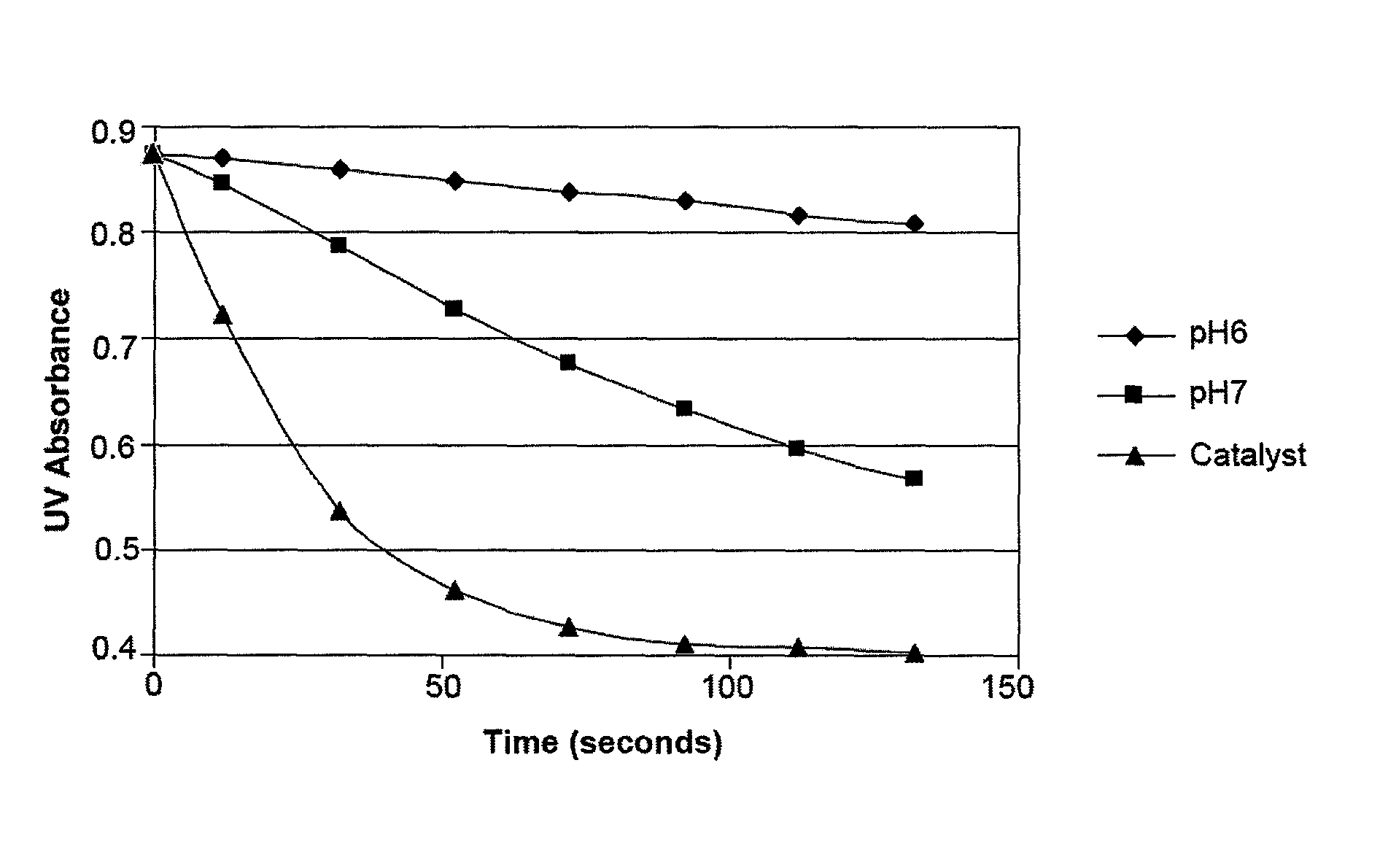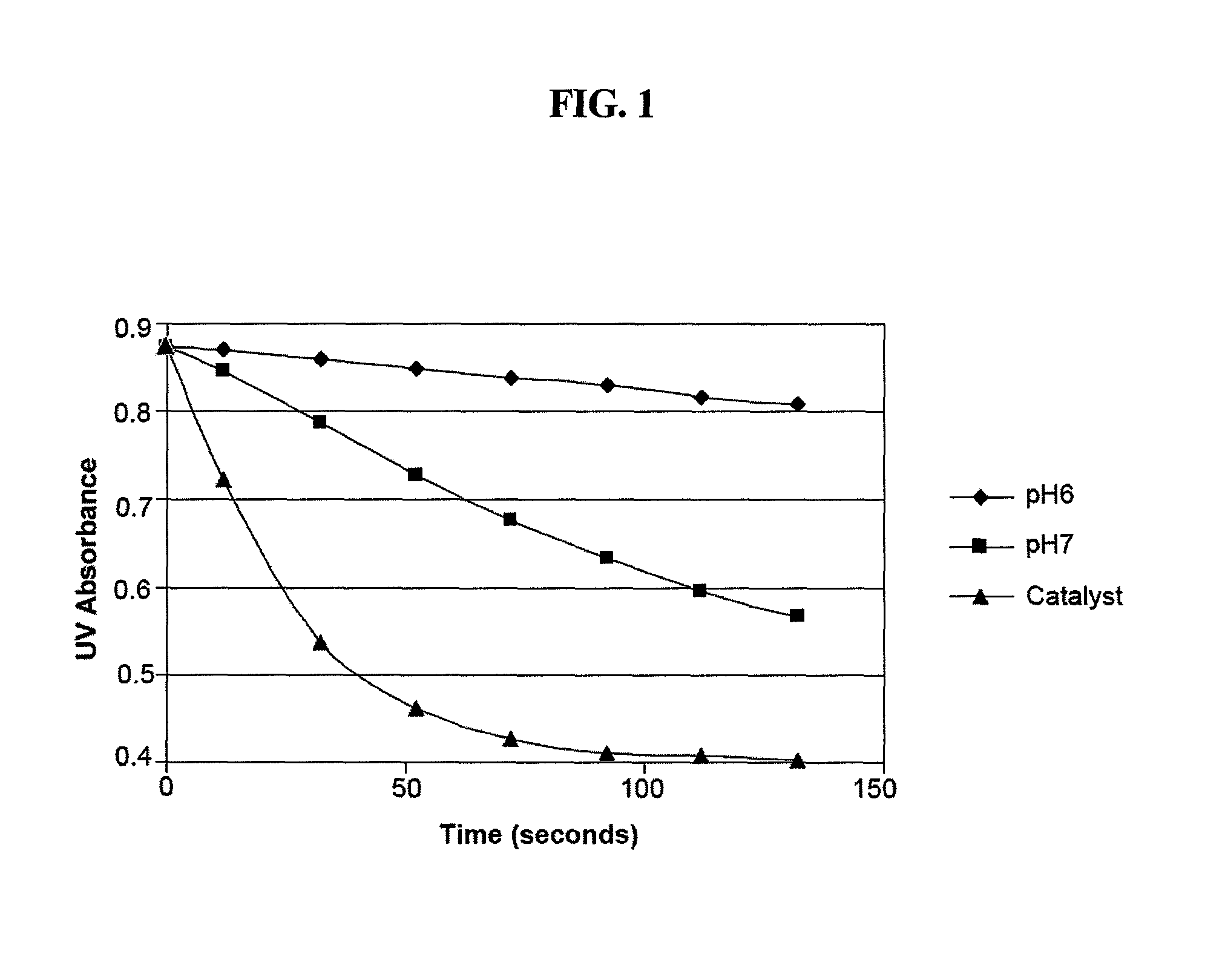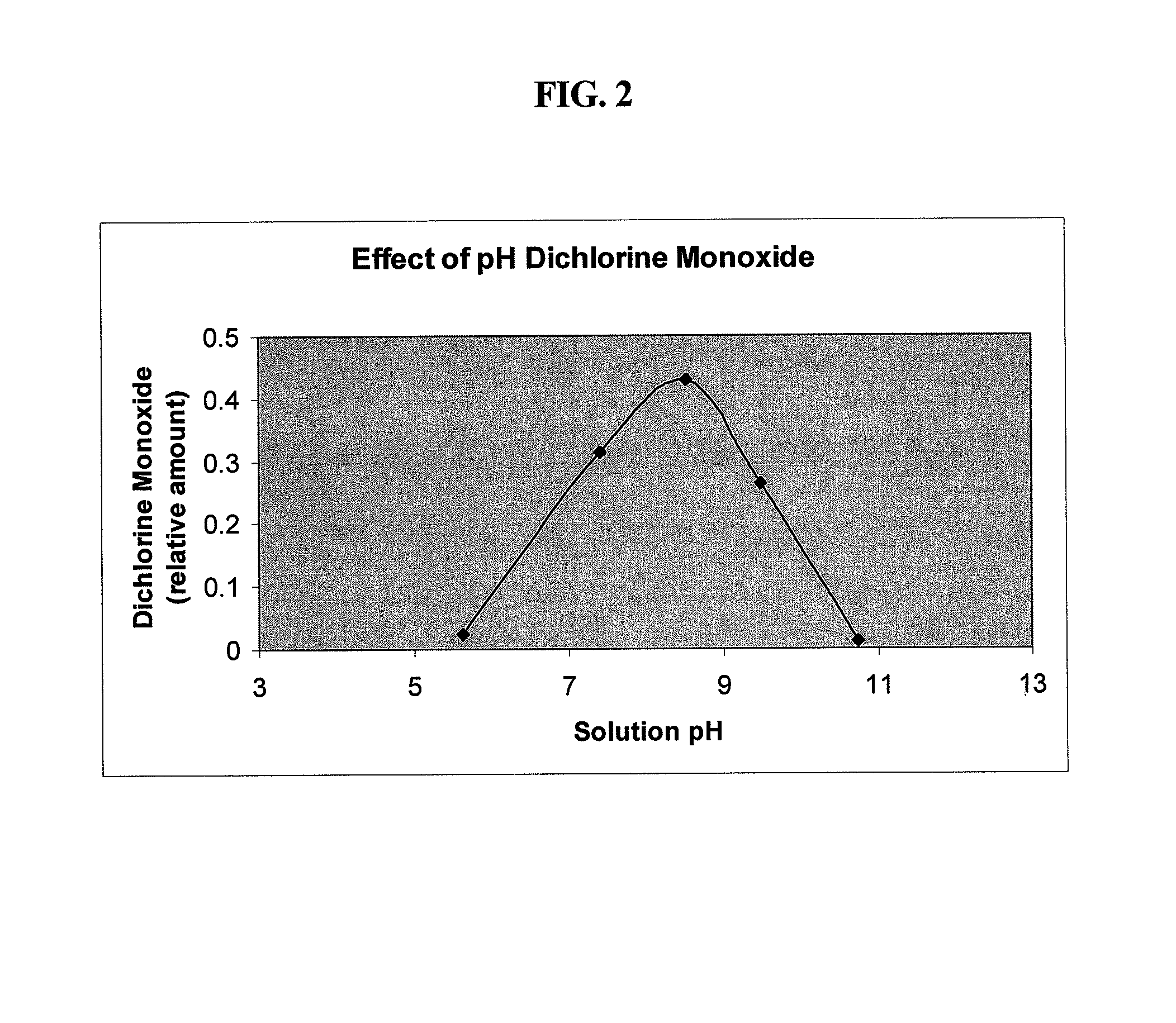Antimicrobial solutions containing dichlorine monoxide and methods of making and using the same
a technology of dichlorine monoxide and antimicrobial solutions, which is applied in the direction of magnesium halide, x-ray tubes, inorganic non-active ingredients, etc., can solve the problems of tissue ischemia, pressure skin ulcers, and more serious problems
- Summary
- Abstract
- Description
- Claims
- Application Information
AI Technical Summary
Benefits of technology
Problems solved by technology
Method used
Image
Examples
example 1
[0118]This example demonstrates a method of determining the rate of dichlorine monoxide formation.
[0119]In dilute solution, hypochlorous acid is in equilibrium with minute amounts of dichlorine monoxide:
2HOCl⇄Cl2O+H2O
The large excess of water pushes the equilibrium towards HOCl so in solution there is hardly any dichlorine monoxide present. What is important, however, is the rate at which HOCl is converted to Cl2O. This reaction is catalyzed by a number of different chemicals. Since Cl2O is significantly more reactive with certain chemicals than HOCl, it is possible to determine the rate of formation of Cl2O through the reaction rate of the solution with an indicator chemical. Four-hydroxy benzoic acid (“4OH BA”) is used as this indicator compound in what is believed to be the following reaction:
[0120]
[0121]The reaction rate of 4OH BA is determined by measuring the UV absorption at 250 nm over time of a mixture of 4OH BA with a test solution. This wavelength was chosen to maximize 4...
example 2
[0123]This example demonstrates the production of dichlorine monoxide in accordance with the invention.
[0124]The pH dependence of the Cl2O concentration in a hypochlorous / hypochlorite solution is shown in FIG. 2. The catalytic effect of chloride ion on the formation of dichlorine monoxide is most effective at a higher pH range (pH>5). This can be seen in FIG. 3 for two exemplary pre-antimicrobial hypochlorous / hypochlorite containing solutions. The solution with low chloride ion concentration shows very little Cl2O formation between pH 4-6. At higher chloride content, the chlorinating ability of the solution at pH 4 is much greater. The chlorinating ability at this pH is due to a combination of the formation of dichlorine monoxide and also chlorine gas. Increasing chloride ion will shift this point to a higher pH. Once the pH reaches 6, the effect due to hypochlorite ion overshadows the chloride effect.
[0125]These results indicate that the amount dichlorine monoxide present in a hypo...
example 3
[0126]This Example demonstrates spore killing activity of an exemplary activated hypochlorous acid solution in the wound.
[0127]This Example studied the minimum amount of Free Available Chlorine (FAC) needed in an activated hypochlorous acid solution at pH levels between 5.5 and 8.5 to demonstrate efficacy in the spore kill test. Additionally, the effect of hypochlorous acid (HOCl) content on product efficacy in this pH range was examined. The data obtained show that as solution pH increases, higher concentrations of FAC are needed in order to show the same efficacy against spores.
[0128]The spore kill test is a suspension test in which spores are suspended in product, and then exposed for ten minutes. The solution is then neutralized and plated. The plates are incubated and checked for bacterial growth. FAC levels showing “complete kill” are those solutions whose plates show no growth. The results are presented in FIG. 5 and indicate the desirability of maintaining a pH of less than ...
PUM
| Property | Measurement | Unit |
|---|---|---|
| pH | aaaaa | aaaaa |
| diameter | aaaaa | aaaaa |
| diameter | aaaaa | aaaaa |
Abstract
Description
Claims
Application Information
 Login to View More
Login to View More - R&D
- Intellectual Property
- Life Sciences
- Materials
- Tech Scout
- Unparalleled Data Quality
- Higher Quality Content
- 60% Fewer Hallucinations
Browse by: Latest US Patents, China's latest patents, Technical Efficacy Thesaurus, Application Domain, Technology Topic, Popular Technical Reports.
© 2025 PatSnap. All rights reserved.Legal|Privacy policy|Modern Slavery Act Transparency Statement|Sitemap|About US| Contact US: help@patsnap.com



